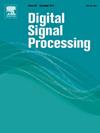UCT: Uncertainty-Based Consistency Training for Domain Adaptive Human Activity Recognition
IF 2.9
3区 工程技术
Q2 ENGINEERING, ELECTRICAL & ELECTRONIC
引用次数: 0
Abstract
In the filed of mobile sensing and applied computing, sensor-based human activity recognition (HAR) constitutes a critical element. Labeling large datasets is typically resource-intensive and costly. Moreover, HAR models trained on one user show sub-optimal performance when generalized to other users due to data heterogeneity. This heterogeneity arises from variations in daily routines and environmental conditions among different data-gathering subjects. To achieve precise HAR with lower labeling costs, We propose a new approach to achieve domain adaptation using uncertainty-based consistency training (UCT). Aligning source and target domains is a significant challenge for traditional domain adaptation methods, due to the influence of domain-specific features, which hinders the extraction of domain-invariant features and leads to sub-optimal adaptation performance. In summary, we propose an uncertainty-based consistency training method. First, source and target domains are mapped to their respective intermediate domains through consistency training. Since the intermediate domain shares feature representations and contains minimal domain-specific features, this mapping reduces the influence of domain-specific features while also narrowing the discrepancy between the two domains. Subsequently, the discrepancies between source and target domains are mitigated through aligning them with an intermediate domain, thereby achieving more precise feature alignment. Additionally, to enable the model to learn multi-modal features from multiple sensors, we propose a multi-scale feature Attention network (MSFAN). Finally, we demonstrate that the domain adaptation performance of UCT significantly outperforms other methods by conducting extensive experiments on three public HAR datasets.
求助全文
约1分钟内获得全文
求助全文
来源期刊

Digital Signal Processing
工程技术-工程:电子与电气
CiteScore
5.30
自引率
17.20%
发文量
435
审稿时长
66 days
期刊介绍:
Digital Signal Processing: A Review Journal is one of the oldest and most established journals in the field of signal processing yet it aims to be the most innovative. The Journal invites top quality research articles at the frontiers of research in all aspects of signal processing. Our objective is to provide a platform for the publication of ground-breaking research in signal processing with both academic and industrial appeal.
The journal has a special emphasis on statistical signal processing methodology such as Bayesian signal processing, and encourages articles on emerging applications of signal processing such as:
• big data• machine learning• internet of things• information security• systems biology and computational biology,• financial time series analysis,• autonomous vehicles,• quantum computing,• neuromorphic engineering,• human-computer interaction and intelligent user interfaces,• environmental signal processing,• geophysical signal processing including seismic signal processing,• chemioinformatics and bioinformatics,• audio, visual and performance arts,• disaster management and prevention,• renewable energy,
 求助内容:
求助内容: 应助结果提醒方式:
应助结果提醒方式:


